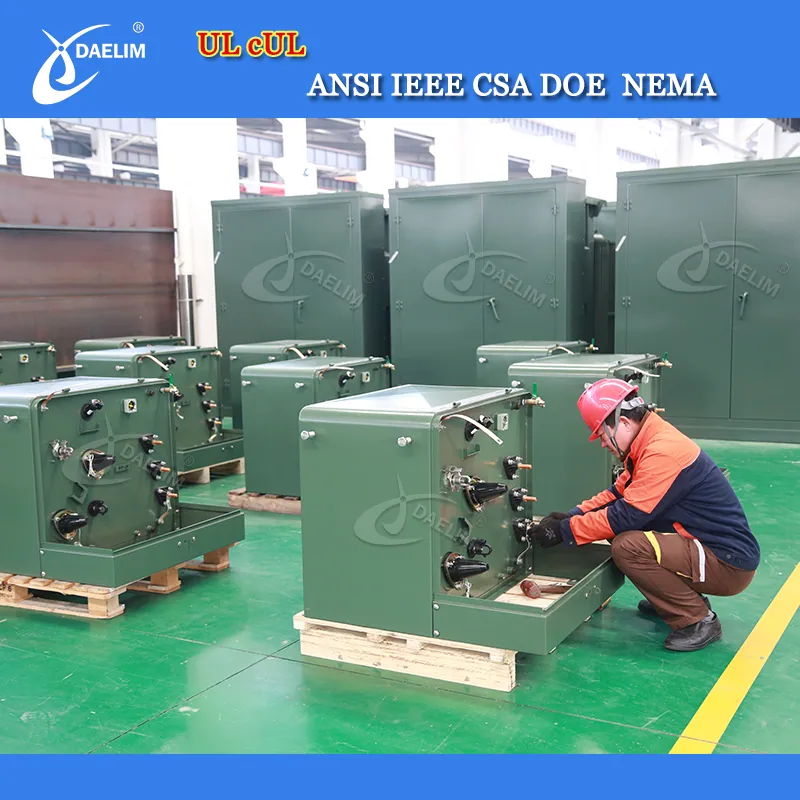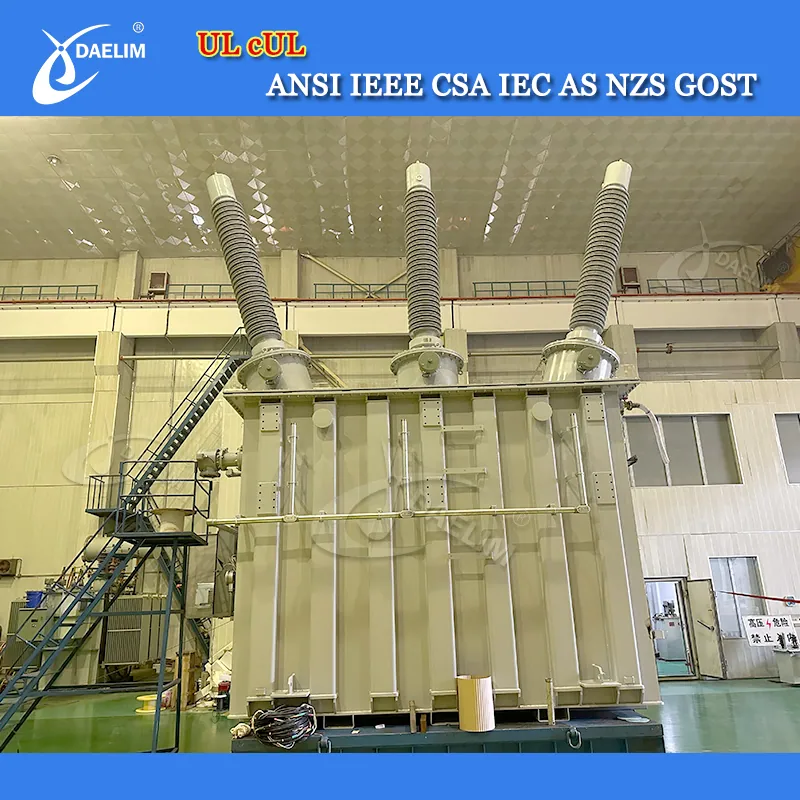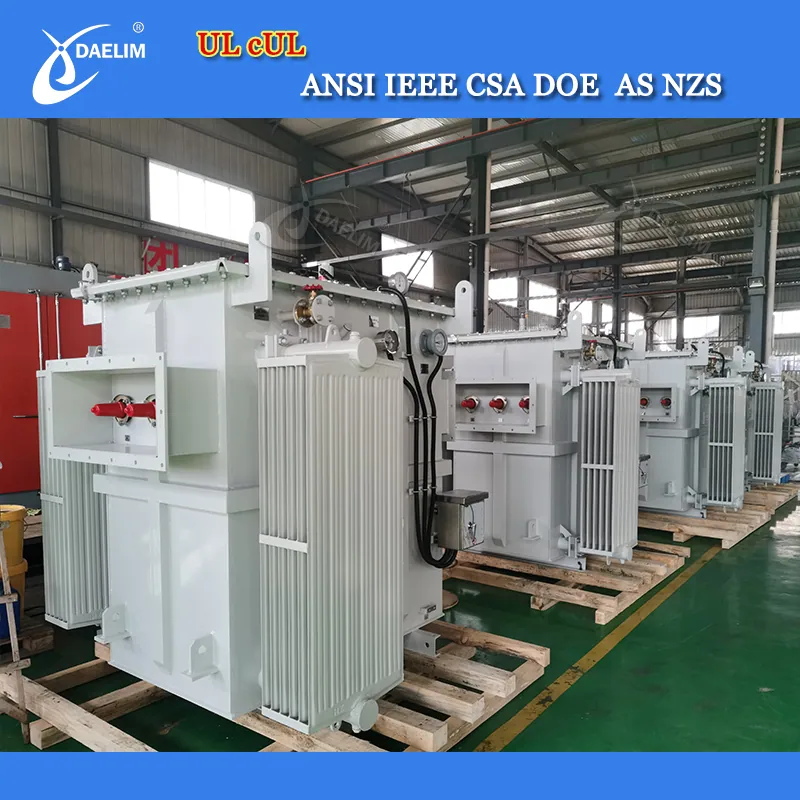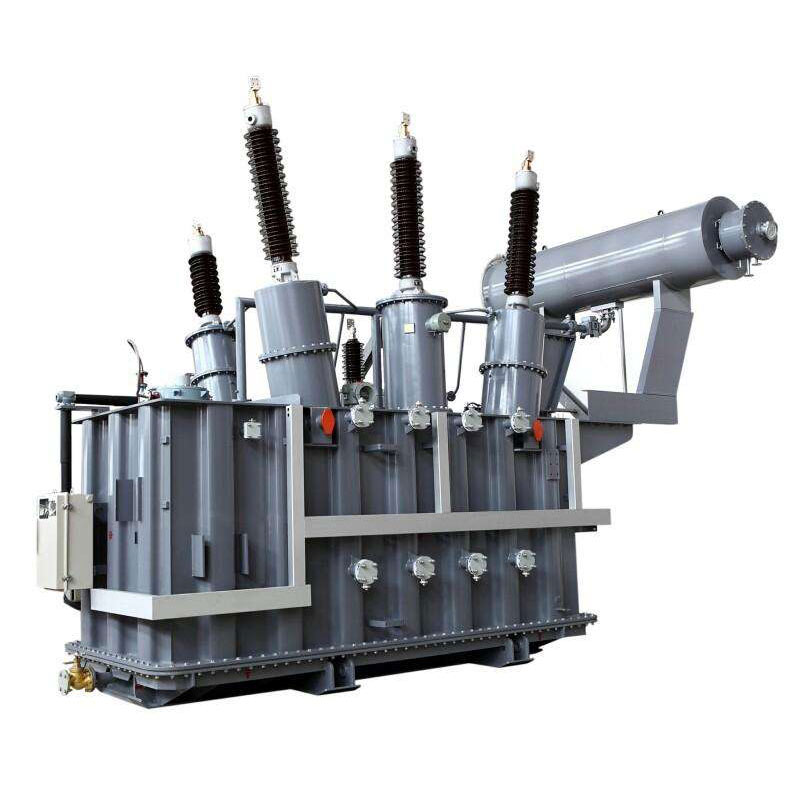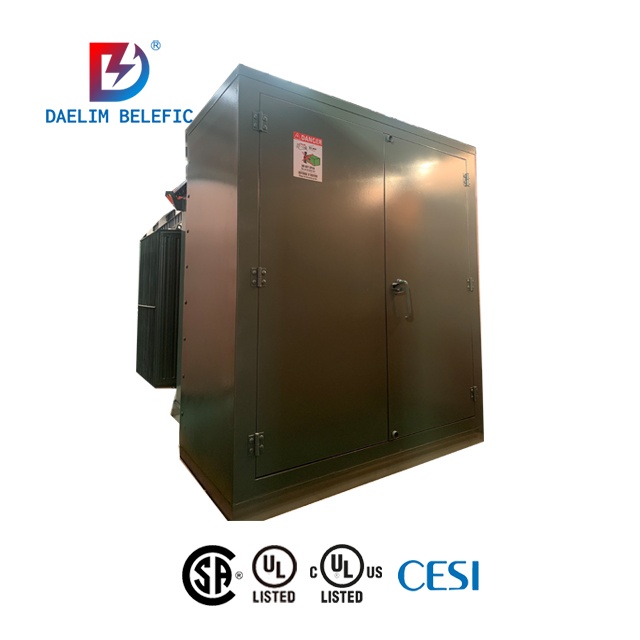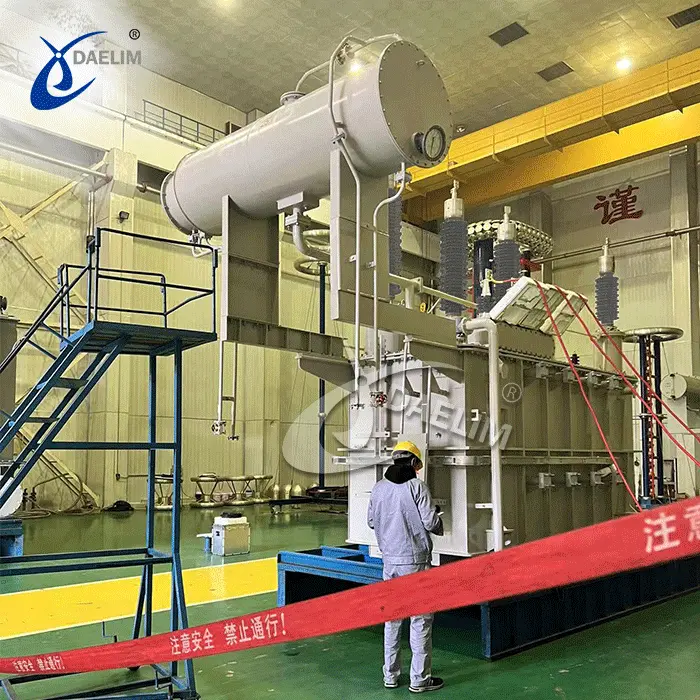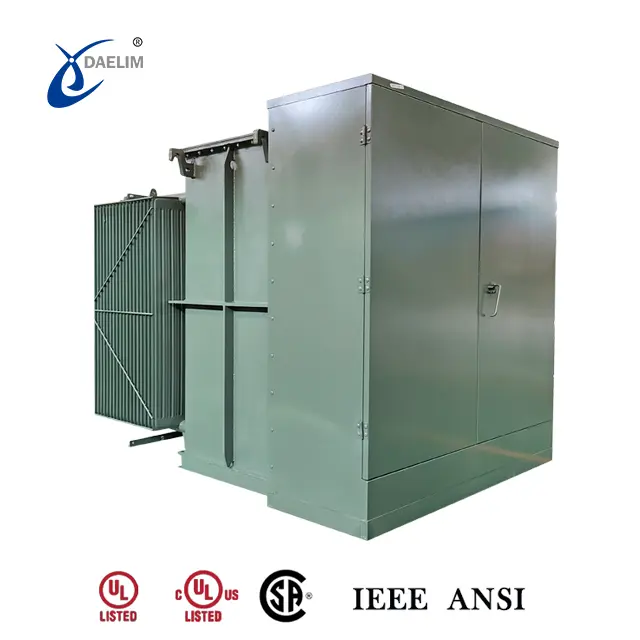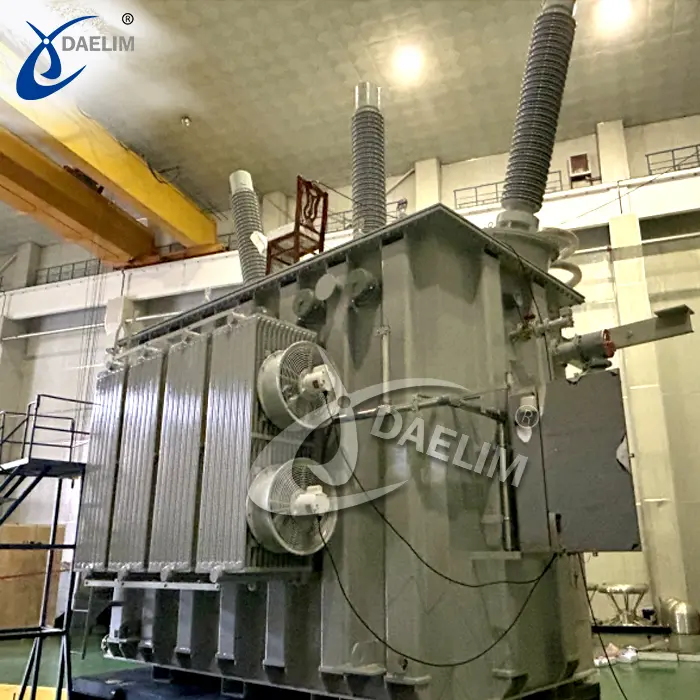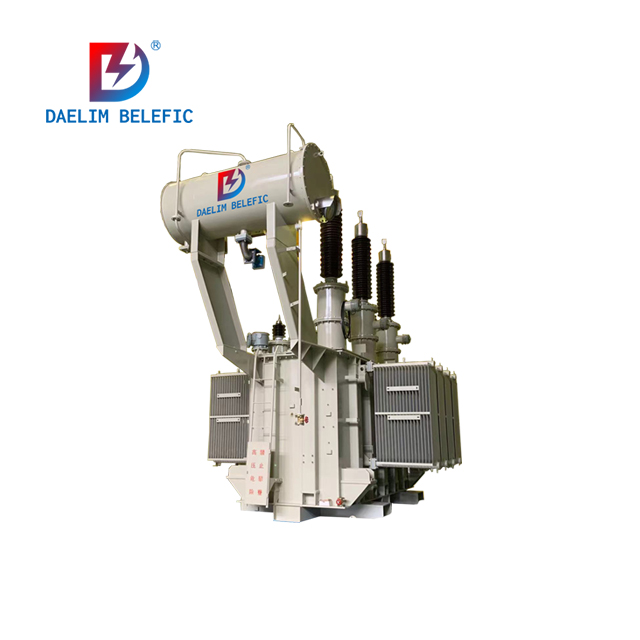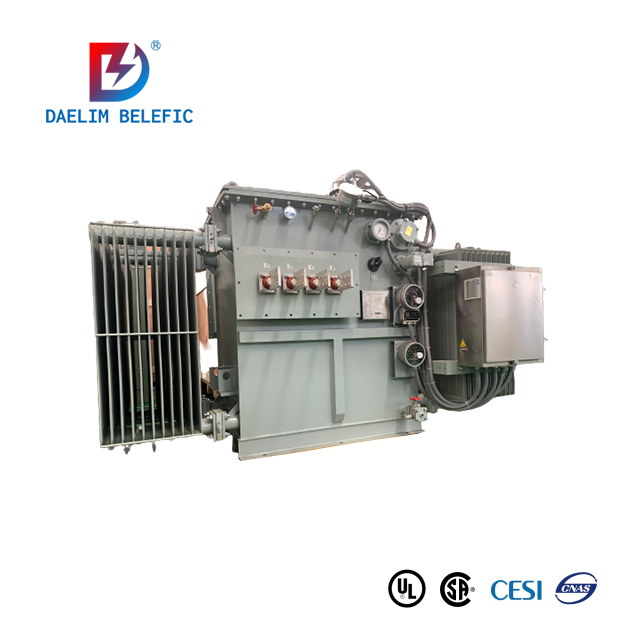Ultimate Guide To MVA Transformer
We know how important it is to get the right power transformer. That's why we've created this post, where you can find out everything you need to know about getting the high-voltage MVA transformer for your needs.
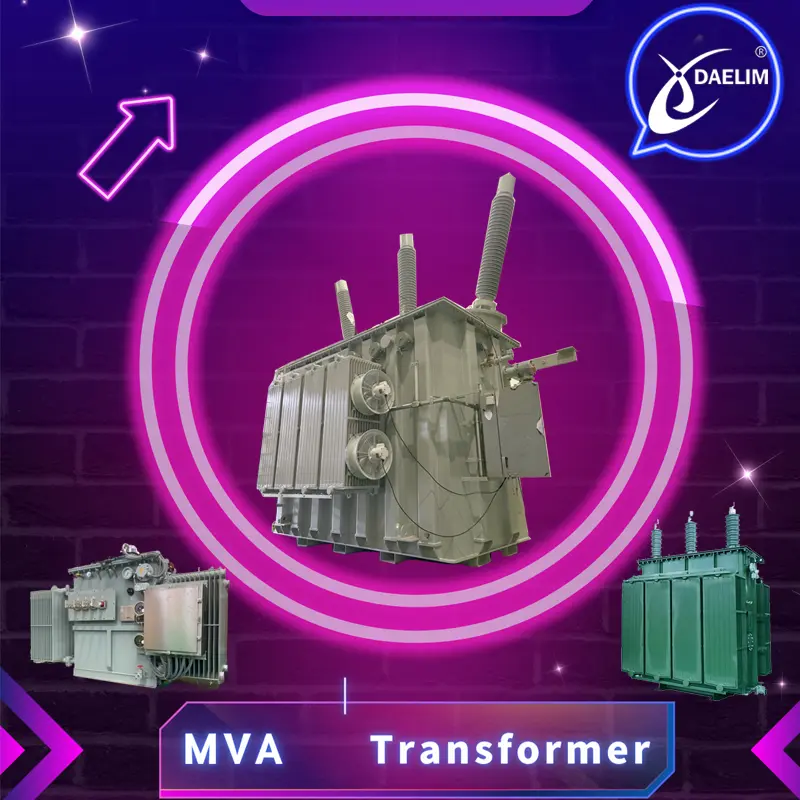
MVA transformers come in many sizes, depending on your needs: they can range from 120 MVA to 600 MVA. The previous article talked about 4-16mva and 18-90mva, if you are interested, you can click to view it.
The size of your transformer will depend on how much power it's going to carry—the higher the rating, the bigger it needs to be!
MVA transformer rating is the amount of power a transformer can safely handle and is mainly expressed in megavolt-amperes (MVA). A circuit's apparent power, or MVA, is equal to the product of the circuit's voltage and current. The MVA rating of a transformer is your best indicator of how much power it can safely and reliably carry. However, the MVA rating is not the sole factor in determining the transformer's actual power transfer capabilities; the transformer's impedance and the load on the transformer both play a role.
There are many different types of ratings, but they all fall into one of three categories: 120MVA, 150MVA, 160MVA, 200MVA, 250MVA, 300MVA, 315MVA, 350MVA, 400MVA, and 600 MVA. Let's discuss each one!
When Referring To A Transformer, What Does MVA Rating Mean?
MVA rating is a power rating that is generally used for the power capacities of a transformer. It is usually stated in mega volt-amperes (MVA) (1 million volt-amps). It's very much like how we assess the amount of space available for storage.
One more method for classifying transformers is generally based on their ratings in terms of kilovolt-amperes (1-thousand-volt amps). Although it is possible to rate a transformer based on its apparent power and an assumed power factor, the true limits are temperature and will be proportional to the current amperes.
Learn more: The Ultimate Guide to 5mva Transformers
How Does One Calculate The MVA Transformer Rating?
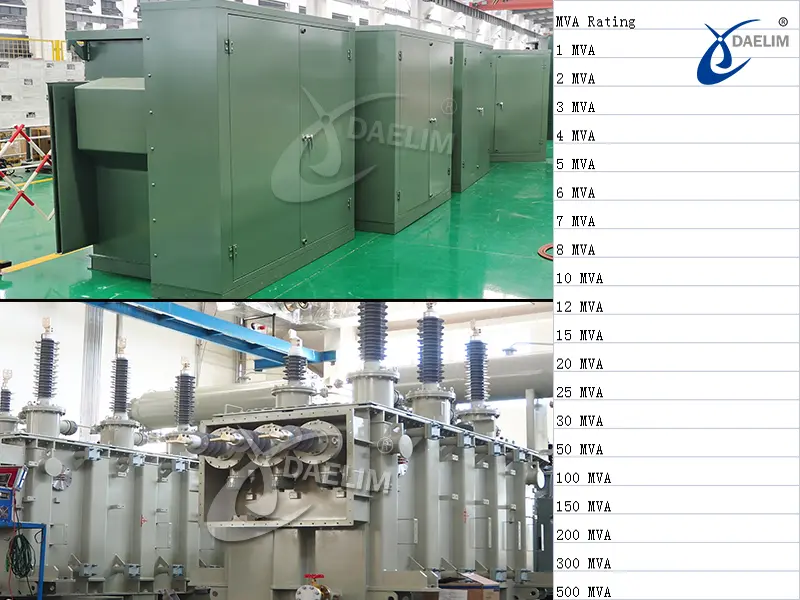 To calculate the "apparent power" of a power transformer, multiply its nominal voltage by the greatest continuous current it can manage in amperes. The power output of a transformer is always dependent on both its operating voltage (which influences the transformer's dielectric strength or insulation) and its maximum current capacity.
To calculate the "apparent power" of a power transformer, multiply its nominal voltage by the greatest continuous current it can manage in amperes. The power output of a transformer is always dependent on both its operating voltage (which influences the transformer's dielectric strength or insulation) and its maximum current capacity.
The three sets of windings in a three-phase transformer must all have the same voltage and current ratings. Hence, a three-phase distribution transformer with a primary current rating of 116 Amps would be usually rated at a voltage of 120/208 if it was mainly designed to convert 12470 Volts (12.47 kV).
Using the formula:
12470 Volts x 116 Amperes x 1.73205 (3 phase) = 2.5 MVA
Try for free: How Much You Know To Purchase The 12.5 MVA Transformer?
What is Transformer Rating?
Power transformers are only safe to use up to their rated voltage and current. The rating of a transformer is often indicated on the nameplate in either VA (Volt-Amps) or kVA (Kilovolt-Amperes).
The ratings of a transformer should reflect the maximum safe input voltage and current. A transformer's rating is generally determined by analyzing its loss characteristics about temperature increase.
Nevertheless, transformers are often built to restrict the maximum rise in liquid temperature, and the average rise in winding temperature. Also, the maximum rise in winding temperature for liquid-filled units, all of which are mainly affected by the applied load.
The rating of a transformer can be also seen from its losses, which are in turn a result of the machine's cooling system.
Standard Nameplate Ratings for a Transformer
The NEC specifies what must be always included on the nameplate of a transformer. The following details must be always included:
- Manufacturer's name
- kVA Rated Frequency
- Power sources and their outputs
- Transformer impedance
- Power transformers' vent opening clearances
- Insulating liquid quantity and kind utilized
- Insulation system temperature class for dry-type transformer
Reading more about Transformer Rating
120MVA to 600MVA Transformer Ratings
Power transformers with ratings of 100 MVA or above are mainly utilized extensively across all stages of the power generating and distribution processes. There are several benefits that users and customers can reap from using high-voltage converters.
- Reduced partial discharge, noise, and loss.
- It has a very strong resistance to lightning and short circuits.
- Superior functionality at a hundred percent relative humidity.
- The high overload tolerance allows for continuous functioning at 150% overload.
Let's take a look at each one.
What Is The Rating Of A 120 MVA Transformer?
The 120 MVA transformer has a rating of 120,000 kVA. A 120 MVA transformer is highly effective against sudden short circuits in addition to low levels of local discharge, loss, noise, and noise.
It can hold up to 51,600 liters of oil because it weighs about 208,000 kg, at its maximum capacity.
Due to their high moisture resistance, these 120 MVA transformers can be generally used in environments with an RH of 100 percent. That's why it's fine to run at 150% overload for a long period.
- Rated Power: 120 MVA
- Equivalent KV: 120,000 kVA
- Frequency: 50/60Hz
- Phasing: Three
- Cooling Type: ONAN/ONAF
- Main Voltage: up to 110KV
- 2nd Voltage: 11KV
- Impedance: 8-14%
- Core Material: Silicon Steel
- Temperature Rise: 60/65K
- Insulation: A Class
- Frequency Characteristics: Power Frequency
Get it now: The Ultimate FAQs Guide To 100 MVA Transformer
What Is The Rating Of A 150 MVA Transformer?
The transformer with a rating of 150 MVA has a rating of 150,000 kVA. In general, a transformer with 150 MVA will weigh somewhere around 236,000 kilograms. In addition to this, its carrying capacity for oil is 98 thousand kilograms.
Moreover, it possesses the same cooling capacities as both ONAN and ONAF. These 150 MVA transformers are suitable for use in areas with relative humidity as a result of their excellent moisture resistance.
- Rated Power: 150 MVA
- Equivalent KV: 150,000 kVA
- Frequency: 50
- Phasing: Three
- Cooling Type: ONAN/ONAF
- Main Voltage: up to 110KV
- 2nd Voltage: 11KV
- Impedance: 10-16%
- Core Material: Silicon Steel
- Temperature Rise: 60/65K
- Insulation: A Class
- Frequency Characteristics: Power Frequency
- Winding Material: Copper/Aluminum
- Vector Group: Dyn11/ Yyn0
Learn more about 110kV 138kV Power Transformer
What Is The Rating Of A 160 MVA Transformer?
A 160 MVA transformer can handle loads of up to 160,000 kVA.In most cases, the mass of a 160 MVA transformer will be close to 189,000 kg.
In addition to this, its capability for transporting oil amounts to 54,000 kilograms. The oil-immersed and conservator tank categories are both applicable to the 160 MVA transformer.
For the smooth operation of your electrical power systems, a 160 MVA transformer is an excellent and practical investment.
- Rated Power: 160 MVA
- Equivalent KV: 160,000 KVA
- Frequency: 50
- Phasing: Three
- Cooling Type: ONAN/ONAF
- Voltage Ratio: 132 000/ 11 500 V
- Voltage Regulation: Motorized OLTC On-load tap changer
- Tapping Range: 132 000 V +-12x 1%
- Impedance: 10%-16%
- Connection: YNd11
Keep reading: The Ultimate Guide to 4-16 MVA Transformers
What Is The Rating Of A 200 MVA Transformer?
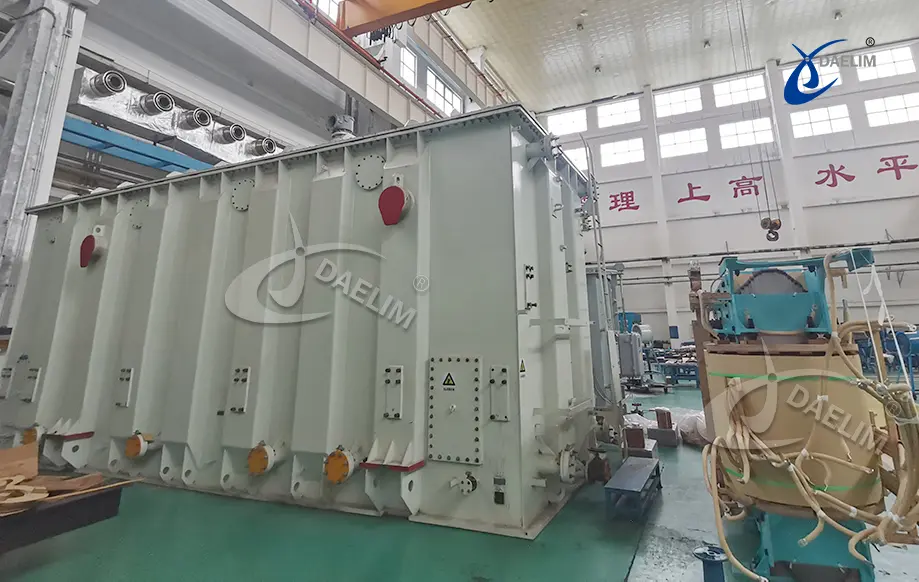
A transformer of 200 MVA is the standard for automatic transmission systems. To begin, a 200 MVA transformer is an extremely massive and substantial piece of electrical machinery.
Such equipment must be mainly used for high voltage output, such as 500,000 volts if a designer chooses to employ it.
The maximum load that can be safely applied to a 200 MVA transformer is 200 kVA.Also, a typical 200 MVA transformer will weigh close to 90 tons.
- Rated Power: 200 MVA
- Equivalent KV: 200,000 kVA
- Frequency: 50/60 Hz
- Cooling Type: ONAN, ONAF, OFAW
- Vector Group: Fully customizable
- Core Material: CRGO
- Winding Material: Aluminum or copper
- Temperature rise: 60/65C or fully customized
- Radiators: Tank-mounted cooling radiator panels
- HV & LV terminals: Air cable box type (33kV max)
- Installations: Indoor or Outdoor
Try for free: Comprehensive Guide to 18MVA to 90MVA Transformers
What Is The Rating Of A 300 MVA Transformer?
The 300 MVA rating indicates that the transformer can withstand up to 300,000 KVA and 1,000 Amps at its terminals. In terms of secondary connection changeover time, a 300 MVA transformer can offer the most versatility.
Not only that, but it can cool just as well as ONAN and ONAF can. Due to their high moisture resistance, these 300 MVA transformers can be potentially used in places with high relative humidity.
300 MVA transformers are also used across the power industry, from generating sets and power plants to distribution substations (GSU).
It is usually distinguished by its low loss, high efficiency, and inability to require any sort of upkeep.
- Rated Power: 300 MVA
- Equivalent KV: 300,000 kVA
- Frequency: 50/60 HZ
- Phasing: Three
- Cooling Type: ONAN/ONAF/OFAW
- Winding Type: Multi-winding Transformer
- Tank: Corrugated Steel Plate
- HV: 343-500kV
- Capacity range: 300-400MVA.
- LV: 220kV/230kV/138kV/69kV
You may enjoy: Pad Mounted Transformer
What Is The Rating Of A 315 MVA Transformer?
The power output of the transformer is generally specified as 315,000 kVA, which is equivalent to 315 MVA.315 MVA transformers can be typically found in a variety of locations, including power plants, distribution substations, and generator sets, just like their counterparts with a capacity of 300 MVA.
It has the same high efficiency, little or no maintenance requirements, and low rate of loss as its counterpart. Due to the excellent resistance a 315 MVA transformer has, they are appropriate for use in wet environments.
- Rated Power: 315 MVA
- Equivalent KV: 315,000 kVA
- Frequency: 50/60 HZ
- Phasing: Three
- Cooling Type: ONAN/ONAF/OFAF
- Winding Material: Copper
- Tapping Range: 60%(+15% Tol)
- Winding Type: Multi-winding Transformer
- Tank: Corrugated Steel Plate
Read my article on The Ultimate Guide to Oil-Cooled Transformers
What Is The Rating Of A 350 MVA Transformer?
With a 350 MVA transformer, substation space is utilized more effectively, and maintenance costs are highly reduced. The maximum load that can be usually applied to a 350 MVA transformer is 350,000 kVA.
Both ONAF and ONAN have become standard practices for cooling transformers with a 350 MVA rating. Losses, noise, and temperature increase are some of the other factors that should be generally considered when designing 350 MVA transformers.
- Rated Power: 350 MVA
- Equivalent KV: 35,000 kVA
- Frequency: 50/60 HZ
- Phasing: Three
- Cooling Type: ONAN/ONAF
- HV: 110-300kV
- Output Voltage: 66-110kV
- Winding Material: Copper
- Winding Type: Multi-winding Transformer
- Tank: Corrugated Steel Plate
Get it now: Basic Guide To High Voltage Power Transformers
What Is The Rating Of A 400 MVA Transformer?
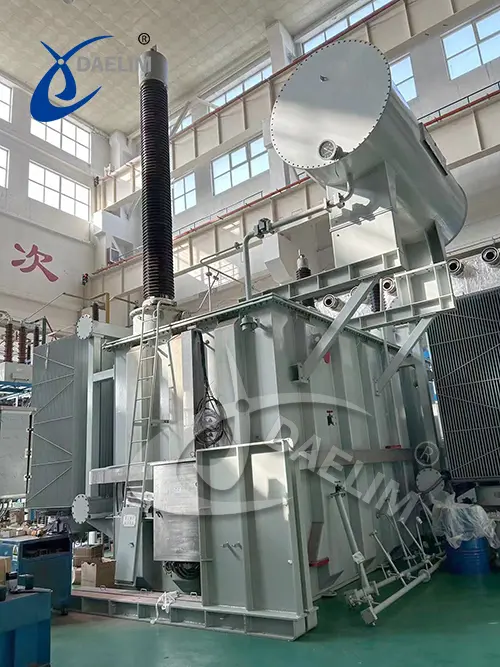 A 400 MVA transformer is a useful device for reducing the intensity of the high-voltage electricity coming from a power station. To guarantee good performance across a wide range of applications and market areas, 400 MVA transformers are widely constructed to fulfill the specific needs of power companies and the industry as a whole.
A 400 MVA transformer is a useful device for reducing the intensity of the high-voltage electricity coming from a power station. To guarantee good performance across a wide range of applications and market areas, 400 MVA transformers are widely constructed to fulfill the specific needs of power companies and the industry as a whole.
A 400 MVA transformer has a power rating of 400,000kVA. In business and manufacturing environments, low-voltage power ensures the reliable operation of machines and appliances. 400 MVA transformers are essential to the power generation, transmission, and distribution infrastructures of electric utilities and large industrial users.
- Rated Power: 400 MVA
- Equivalent KV: 400,000 kVA
- Frequency: 50/60 HZ
- Phasing: Three
- Cooling Type: ONAN/ONAF
- Winding Material: Copper
- Tank: Corrugated Steel Plate
- Coil Structure: Round, Layer winding, Foil winding
Reading on: High Voltage vs Medium Voltage Transformer
What Is The Rating Of A 600 MVA Transformer?
600 MVA transformer units are mainly used to transfer the power from a generator to a bus bar operating at a higher voltage. These transformers are also used in the event of a generator failure to mitigate the effects of the blackout.
The output of a 600 MVA power plant is equivalent to 600,000 kVA. As a result, high, low, and tertiary voltages are all within reach. Grid operators can make use of spare transformers with wider voltage and impedance ranges thanks to the standardization of 600 MVA transformer designs.
- Rated Power: 600 MVA
- Equivalent KV: 600,000 kVA
- Frequency: 50/60 HZ
- Phasing: Three
- Cooling Type: ONAN/ONAF/ODAF
- Winding Material: Copper
- Tank: Corrugated Steel Plate
- Core Material: CRGO
- Installations: Outdoor
Learn more: The Ultimate FAQs Guide To 500 MVA Transformer
High Voltage 120 MVA to 600 MVA Transformer Manufacturer
Daelim's large power transformers are highly developed, produced, and examined in Chinese factories in line with IEEE/ANSI, and ISO quality standards. Additionally, Daelim provides a wide range of products and services, with an emphasis on total ownership cost, solutions, and reliable performance, to satisfy the needs of our customers for big power transformers.
As you can see, Daelim found that the total cost of ownership, including both the initial investment and subsequent losses, was higher than the cost of the transformer itself. This is why Daelim works hard to keep the transformer's total cost of ownership low.
Daelim Transformers provide a low total cost of ownership because of the company's dependable services and assistance at every stage, from the initial concept to the final field installation. Daelim can help you find the best MVA transformers on the market today. Whether that may be from MVA transformer ratings including 120, 150, 160, 200, 250, 300, 315, 350, 400, and 600.
Ultimately, Daelim knows that finding the right transformer is important, and we want to help you make an informed decision about what kind of transformer would be best for your needs.
Related Products
Related Article
The Ultimate FAQs Guide To 100 MVA Transformer
A 100 MVA transformer is an electrical device that helps to regulate the flow of electricity between two circuits, usually via a step-down or step-up process. With a rating of 100 megavolt-amperes (MVA), 100 MVA transformers are some of the largest and most powerful industrial power systems available.
The Ultimate Guide to 4-16 MVA Transformers
Throughout the guide, we provide specific examples and explanations for various MVA ratings, ranging from 4MVA to 16MVA. By understanding these power ratings, readers can make informed decisions when selecting transformers that meet their specific power needs.
Comprehensive Guide to 18MVA to 90MVA Transformers
Electrical power transformers are the most common types of equipment used for power electricity, typically ranging in power ratings from 18 MVA to 90 MVA. They operate at voltages between 44 kV and 230 kV and are available in either a three-phase or single-phase configuration. These transformers can be either on-load tap-changing or off-circuit tap-changing. They are commonly used in power transmission and substations.

